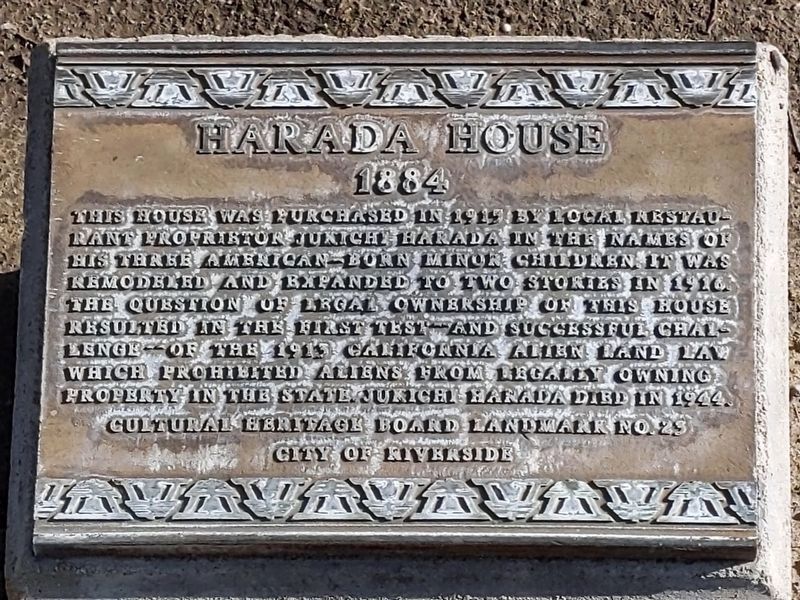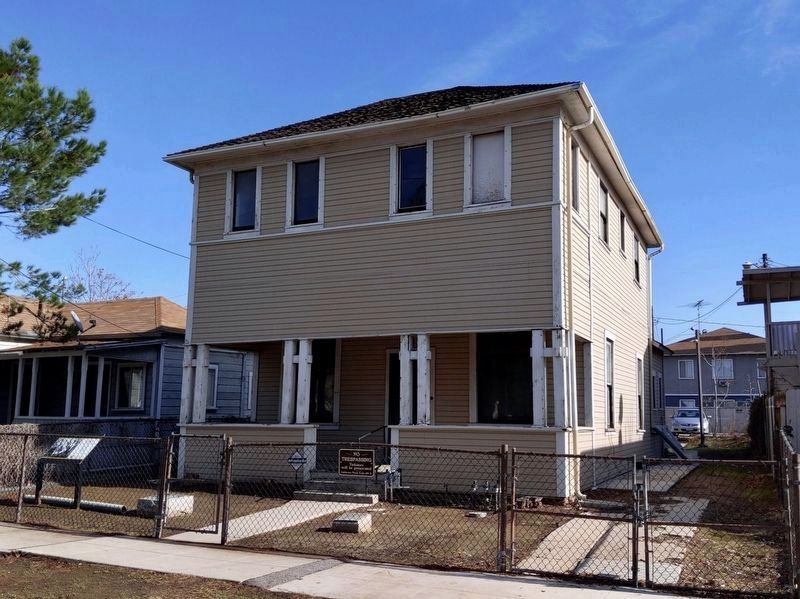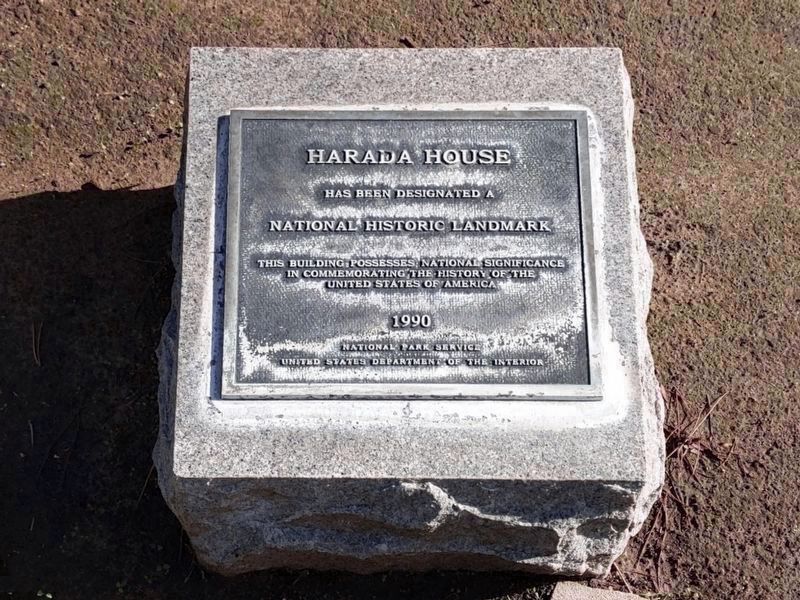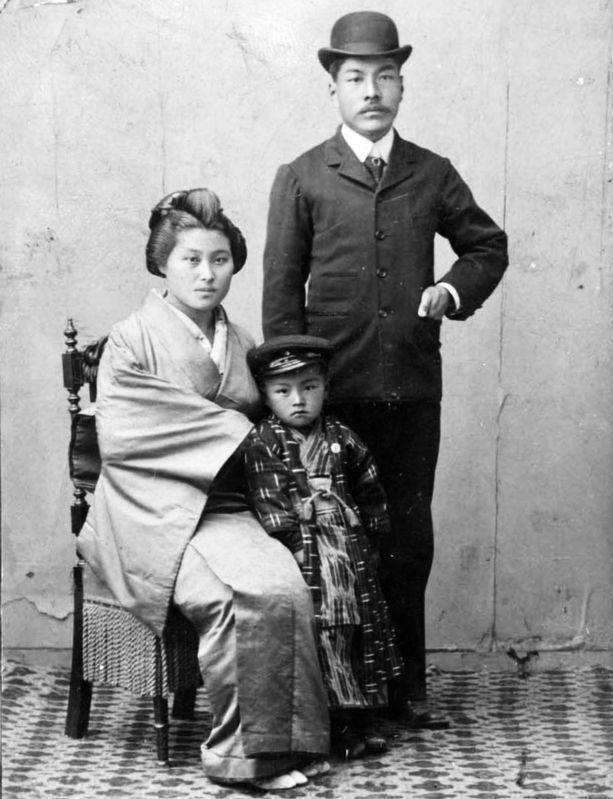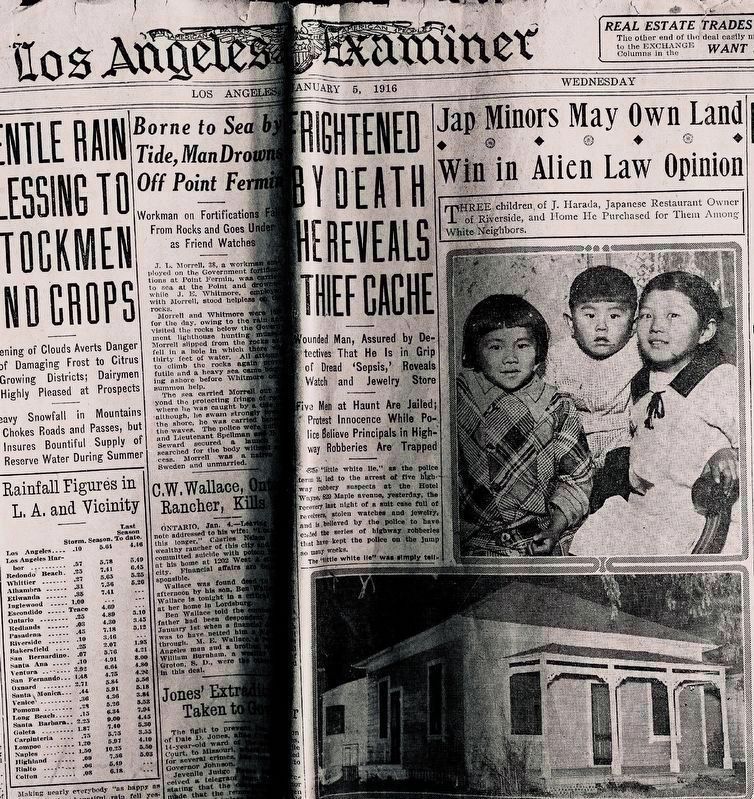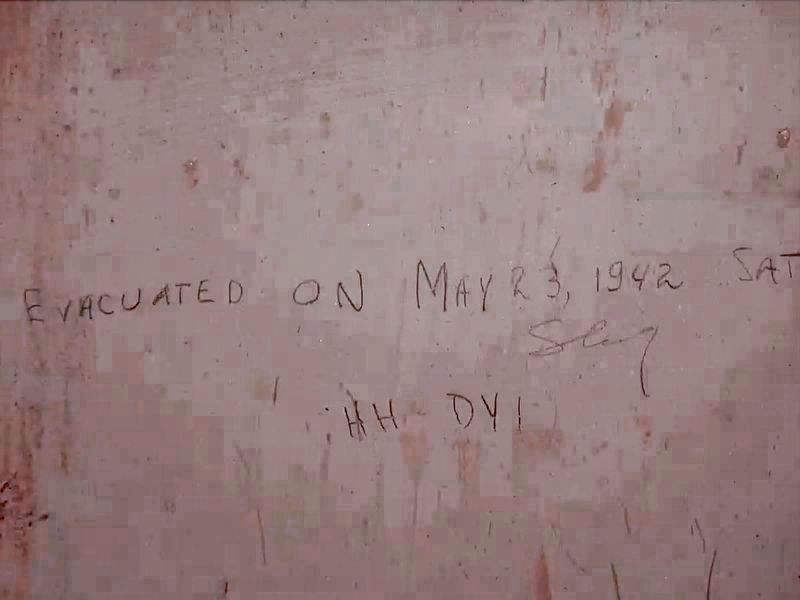Riverside in Riverside County, California — The American West (Pacific Coastal)
Harada House
1884
Erected 1977 by City of Riverside. (Marker Number 1060.)
Topics and series. This historical marker is listed in these topic lists: Asian Americans • Civil Rights • War, World II. In addition, it is included in the California Historical Landmarks, and the National Historic Landmarks series lists. A significant historical year for this entry is 1915.
Location. 33° 59.109′ N, 117° 22.15′ W. Marker is in Riverside, California, in Riverside County. Marker is on Lemon Street north of 4th Street, on the right when traveling north. Touch for map. Marker is at or near this postal address: 3356 Lemon St, Riverside CA 92501, United States of America. Touch for directions.
Other nearby markers. At least 8 other markers are within walking distance of this marker. First Church of Christ Scientist (1900) (approx. 0.2 miles away); Style and Grace of a Golden Era (approx. ¼ mile away); Universalist-Unitarian Church (approx. ¼ mile away); This Olive Tree (approx. ¼ mile away); Riverside Art Center and Museum (approx. ¼ mile away); Napoleon and Joseph (approx. ¼ mile away); Mission Inn (approx. ¼ mile away); Bell From Locomotive 66 (approx. ¼ mile away). Touch for a list and map of all markers in Riverside.
Regarding Harada House. Jukichi Harada emigrated from Japan during the early 1900’s. He purchased this house in 1915 and placed ownership in the hands of his three minor children, who were natural-born United States citizens. This was because immigrants from Japan were prevented from owning property by the California Alien Land Law of 1913. After the purchase, neighboring property owners attempted to drive the Haradas out, without success. State authorities then filed suit against the children to bring it into state ownership in 1916. In 1918, Superior Court Judge Hugh Craig upheld the right of the children to own the house. In 1942 the Harada family was sent to Japanese internment camps, where both Jukichi Harada and his wife died. During their internment, a Caucasian friend of the family occupied the house, and the family was able to retain ownership. In the years after the war, Sumi Harada, one of the three children, took over the house and boarded other Japanese families who had lost their homes during their internment. The house became a City of Riverside Landmark in 1977 and a National Historic Landmark in 1990. In 2004 the house was given to the Riverside Metropolitan Museum. In 2020 it was designated California Historical Landmark No. 1060.
Credits. This page was last revised on February 7, 2024. It was originally submitted on August 14, 2020, by Craig Baker of Sylmar, California. This page has been viewed 636 times since then and 54 times this year. Photos: 1, 2, 3, 4, 5, 6. submitted on August 14, 2020, by Craig Baker of Sylmar, California. • J. Makali Bruton was the editor who published this page.
